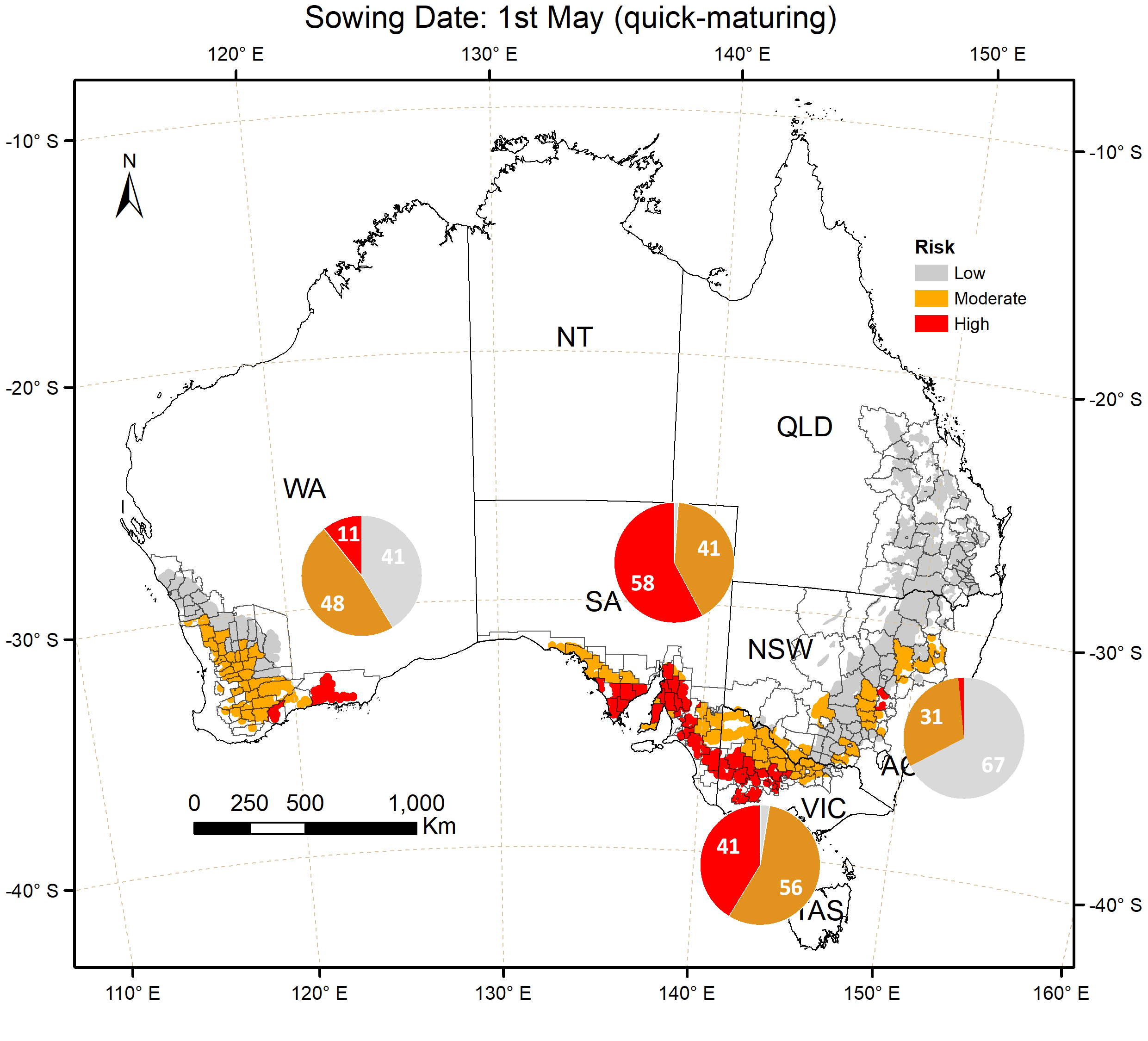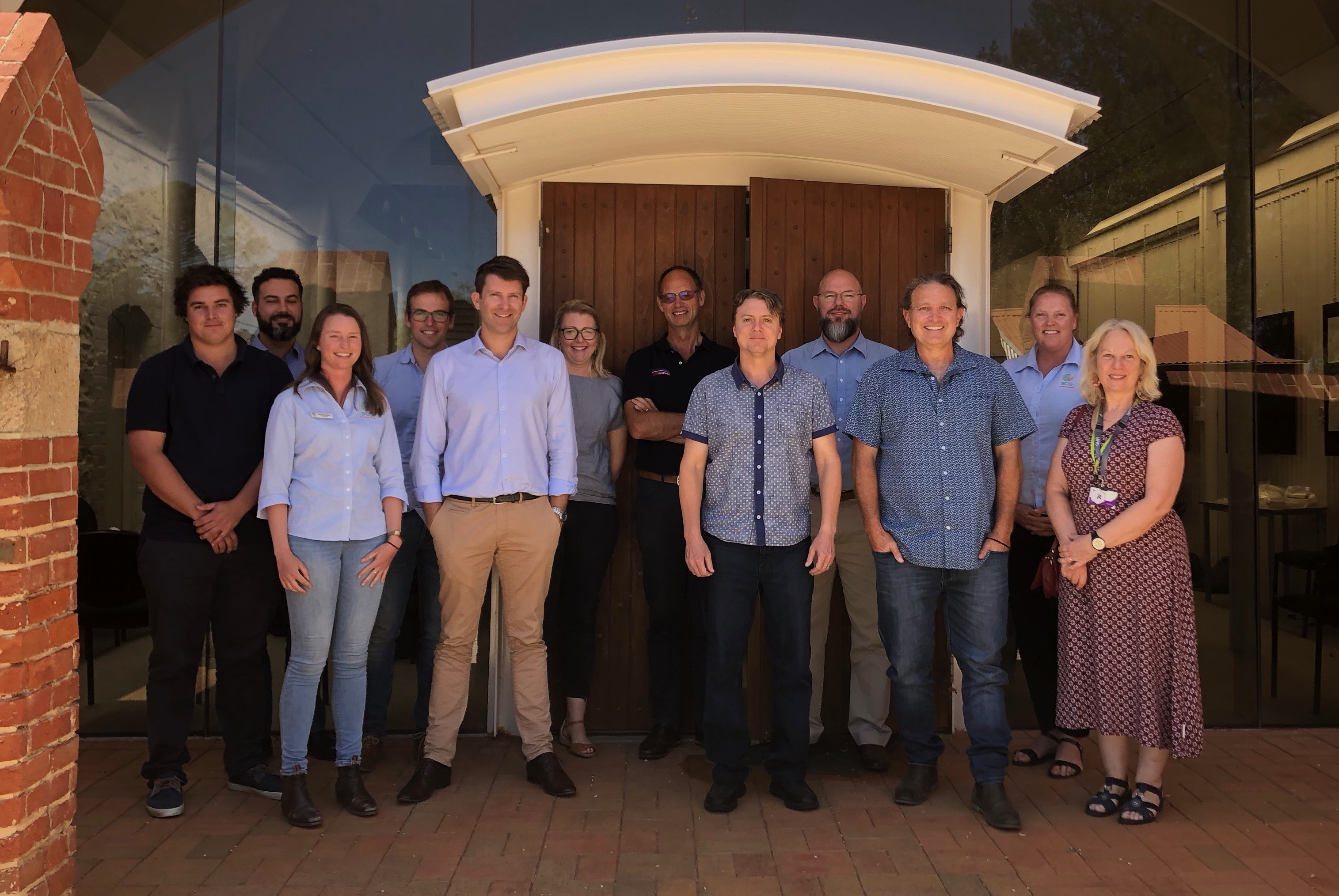Hotspot areas in Australia’s wheatbelt have been identified that are especially prone to a climate-induced grain quality defect.
In LMA-affected wheat varieties, a starch-digesting enzyme (alpha-amylase) is prematurely activated. This causes otherwise normal-looking grain to fall below internationally accepted grain trade quality specifications.
Currently growers are protected from LMA through the Wheat Quality Australia Classification process for milling grades wheats. This classification means that LMA susceptible lines can’t be release as milling wheat varieties in Australia.
Without the classification process, growers could potentially face a $20 to $50-per-tonne penalty when LMA-affected grain is segregated into the general purpose or feed grades, instead of the more lucrative Australian Prime White (APW) grade.
“Without classification the impact of LMA could be especially detrimental to the Australian grains industry since Australia exports a high proportion of its wheat into quality-sensitive markets in Asia,” says Dr Andries Potgieter of the Queensland Alliance for Agriculture and Food Innovation (QAAFI).

However, the current lack of detailed knowledge around the genetic basis and environmental triggers for LMA make it difficult to select against in wheat breeding programs. This means that some high yielding elite breeding lines are lost in the classification process.
Dr Potgieter and his team have been working to help the industry understand LMA by learning to predict both the genetic and environmental factors that pose the greatest risk.
Most recently, the QAAFI team developed diagnostic computer simulations to map the LMA risk posed by one well-characterised environmental trigger.
The trigger involves wheat plants experiencing a cold shock about 26 days after flowering during the mid-grain-filling stage of development.
Knowing this, the researchers searched enormous datasets – derived from high-quality climate stations across the Australian wheatbelt – for such trigger events.
“Our predictive framework fed the weather data into a biophysical crop model to simulate plant growth and detect weather events likely to trigger LMA during the susceptible grain development window,” Dr Potgieter says.

The model produces maps that depict the level of LMA risk to wheat crops at the shire scale.
The maps show higher levels of risk in clusters along a narrow band of shires across the southern region of Australia. The remainder of the southern region shows more moderate risk levels in bands.
These are more extensive in South Australia and less so in Western Australia and Victoria.
For Queensland and NSW, the risk was estimated to be quite low.
However, Dr Potgieter adds that the risk profile varies for different sowing dates and for wheat varieties with different maturity types.
“What we see is risk increasing with earlier sowing dates and with early-to-medium maturing varieties,” he says. “That’s because flowering and, more importantly, the grain-filling period, is more likely to coincide with cooler conditions.”
The new tool is helping wheat-breeding companies to better understand the LMA hotspots. Options to manage potential future risk include exploiting genetics better suited to later sowing dates.
The simulations from the completed project draw on seasonal climate conditions at the shire scale around the country. A new initiative in 2020 will drill down further to better understand risks at the paddock scale.
“The risk of LMA incidence at field scale, across Australia’s wheatbelt, is currently not well understood,” Dr Potgieter says. “To close that knowledge gap, the Grains Research and Development Corporation is co-investing with other research partners to develop a predictive model for LMA incidence at field scale for a range LMA-susceptible genotypes.”
The new initiative is also an opportunity to deepen the understanding of LMA trigger events by delving deeper into the way genes and environment interact to damage grain quality.
“We know that out in the field, temperature is not the only trigger controlling LMA,” Dr Potgieter says. “This new project will allow us to get down to the field scale, expand our knowledge of the LMA triggers.”
Outputs from this next phase are expected to create unprecedented opportunities for wheat breeders to better understand both the genetic and environmental factors at work in LMA.

Pictured from left to right: Jeremy Curry (DPIRD WA), Haydn Kuchel (AGT), Genevieve Clarke (BCG), Kenton Porker (SARDI), Daniel Mullen (IG), Felicity Harris (NSW DPI), Bertus Jacobs (LRPB), Robert Armstrong (UQ), Jason Brider (QDAF), Andries Potgieter (UQ), Kelly Angel (BCG), Miranda Mortlock (UQ & QUT). Project team members not in photo: Graeme Hammer (UQ), Ben Biddulph (DPIRD WA), and Brian Cullis (BBAGI).
The new three-year initiative includes a multidisciplinary team of scientists from the University of Queensland, Western Australia’s Department of Primary Industries and Regional Development, NSW Department of Primary Industries, South Australian Research and Development Institute and Birchip Cropping Group, as well as plant-breeding industry partners Australian Grain Technologies, InterGrain and LongReach Plant Breeders.
This project is a co-investment between the Grains Research and Development Corporation, University of Queensland and the Department of Agriculture and Fisheries.
To see the full analysis download the published paper here: https://doi.org/10.1071/CP19005
Contact: Dr Andries Potgieter, Senior Research Fellow, Queensland Alliance for Agriculture and Food Innovation, University of Queensland, Gatton, T. +61 7 535 15085 M. 0408715514, E. a.potgieter@uq.edu.au
Dr Robert Armstrong, Research Fellow, Queensland Alliance for Agriculture and Food Innovation, University of Queensland, Gatton, T. +61 7 535 15086 M. 0417653419, E. r.armstrong1@uq.edu.au
GRDC investment manager: Dr Pip Wilson E: pip.wilson@grdc.com.au
High resolution photos: https://www.dropbox.com/sh/vs761gtu3aujtsy/AAAM4BGobalTo5WP5sgUioXJa?dl=0
Carolyn Martin, QAAFI Communications, M: 0439 399 886 E: carolyn.martin@uq.edu.au



